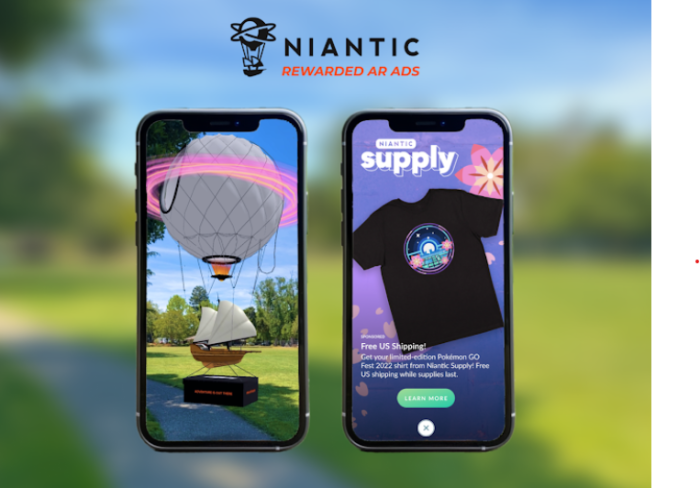
Imagine stepping into a world where advertisements come alive, capturing your attention like never before. Immersive AR ads offer an innovative way for brands to connect with consumers, allowing them to interact with products in a realistic environment. This groundbreaking approach not only enhances user experience but also sets the stage for more memorable marketing campaigns.
By blending the digital and physical worlds, immersive AR ads provide brands with a platform to showcase their products in an engaging manner. Companies like IKEA and L’Oreal have already embraced this technology, demonstrating its potential to transform consumer interactions. With rapid advancements in AR technology, businesses are now equipped to create unparalleled advertising experiences that resonate deeply with their audiences.
Definition and Overview of Immersive AR Ads
Immersive augmented reality (AR) ads combine digital content with the real world, creating engaging experiences that capture consumer attention. These ads stand out in marketing due to their interactive nature, allowing users to visualize products in their own environment before making a purchase. For instance, brands like IKEA have successfully employed AR ads to let customers see how furniture would fit into their homes.
Similarly, cosmetic brands like Sephora use AR to enable users to virtually try on makeup, enhancing the shopping experience.Advancements in AR technology, such as improved camera capabilities in smartphones and the development of AR software frameworks like ARKit and ARCore, are pivotal in creating these immersive experiences. These technologies allow for realistic rendering and tracking of objects, making AR ads more accessible and appealing to a broader audience.
Benefits of Immersive AR Ads for Businesses
Immersive AR ads offer a myriad of advantages over traditional advertising methods. One significant benefit is the enhancement of consumer engagement. Unlike static ads, AR experiences can captivate users by allowing them to interact with the product in a virtual setting. This level of engagement leads to higher retention rates and encourages sharing among peers.Moreover, immersive AR ads significantly boost brand awareness and recall.
By providing an interactive experience, consumers are more likely to remember the brand long after encountering the ad. Such advertisements can also lead to increased conversion rates, as users who engage with AR content are often more inclined to make a purchase.
Implementation Strategies for Immersive AR Ads
To successfully implement immersive AR ads, businesses can follow a structured approach. Here’s a step-by-step guide:
- Identify Target Audience: Understand the demographics and preferences of the audience you want to reach.
- Choose the Right Platform: Select platforms that support AR functionalities, such as social media or dedicated AR applications.
- Create Compelling Content: Develop engaging AR content that showcases your products in a unique way.
- Test the Experience: Before launching, conduct user testing to ensure the AR experience is seamless and engaging.
- Launch and Promote: Roll out the AR ad campaign and promote it through various marketing channels.
- Analyze Performance: Use analytics tools to measure engagement, conversion rates, and return on investment.
Several tools and platforms are available for creating AR advertising content, including:
- Blippar: An AR platform that enables brands to create interactive content.
- Unity: A game development platform that also supports AR experiences.
- Spark AR: Facebook’s tool for creating AR effects for Instagram and Facebook.
To measure the effectiveness of immersive AR ad campaigns, businesses can track metrics like user engagement time, interaction rates, and conversion rates through analytics tools integrated into their marketing platforms.
Case Studies of Successful Immersive AR Advertising Campaigns
Several brands have executed notable immersive AR campaigns that yielded impressive outcomes. For instance, the “Pepsi Max Unbelievable” campaign in 2014 used AR to surprise commuters in a bus shelter with immersive 3D visuals, which resulted in millions of views and significant social media sharing.The creative aspects that made these campaigns successful included unique storytelling and the ability to create shareable content.
In comparison, studies indicate that immersive AR ads often outperform standard digital ads in terms of engagement rates and consumer recall, showcasing the power of interactive content.
Future Trends in Immersive AR Advertising
As AR technology continues to evolve, emerging trends indicate a significant impact on advertising. One notable trend is the integration of artificial intelligence (AI) and machine learning, which enhances personalization in AR experiences. Brands can tailor AR content based on user behavior and preferences, leading to more relevant advertising.Predictions for consumer behavior suggest that as AR becomes more commonplace, users will expect more personalized and immersive experiences in their interactions with brands.
This shift could lead to increased adoption of AR in everyday marketing strategies.
Immersive AR Ads and Affiliate Revenue Opportunities

Immersive AR ads provide exciting opportunities for integration into affiliate marketing strategies. By leveraging these ads, businesses can create unique experiences that drive traffic to affiliate products. For instance, an AR ad can allow users to visualize a product in their environment, enhancing the likelihood of a purchase through an affiliate link.To increase affiliate revenue through immersive AR ads, businesses can:
- Offer exclusive promotions through AR experiences.
- Utilize influencer partnerships to amplify reach and engagement.
- Create immersive content that highlights the benefits of affiliate products.
Best practices for using immersive AR in affiliate promotions include ensuring a seamless user experience, providing clear calls to action, and continuously analyzing campaign performance for optimization.
Role of Immersive AR Ads in Online Business Models
Immersive AR ads can significantly enhance e-commerce platforms by allowing customers to visualize products before purchasing. This capability reduces uncertainty and increases confidence in buying decisions. Additionally, AR can be integrated into online auction businesses, providing bidders with a clearer understanding of the products being sold.Businesses can also leverage immersive AR in blogging and audio streaming contexts by creating engaging content that enhances the user experience.
For example, a blog post about a travel destination could include AR experiences showcasing local attractions, providing readers with a more interactive way to engage with the content.
Challenges and Considerations for Immersive AR Ads
While immersive AR ads offer numerous benefits, businesses may encounter challenges in their creation. These challenges include the need for specialized skills in AR content development, potential high costs of production, and the requirement for access to advanced technology.Privacy concerns and data protection issues are also critical considerations. As AR ads collect user data to enhance personalization, businesses must ensure compliance with regulations like GDPR to protect consumer privacy.Solutions to overcome these challenges include investing in user-friendly AR development tools, collaborating with experienced AR content creators, and establishing clear privacy policies to build trust with consumers.
End of Discussion
As we look to the future, immersive AR ads are poised to redefine the advertising landscape, driving consumer engagement and brand loyalty to new heights. Businesses that harness this powerful tool will not only stand out in a crowded market but also pave the way for innovative marketing strategies. Embracing immersive AR ads today could give companies the competitive edge they need in tomorrow’s marketplace.
Essential Questionnaire
What are immersive AR ads?
Immersive AR ads are interactive advertisements that combine augmented reality technology with marketing to create engaging experiences for consumers.
How do immersive AR ads enhance consumer engagement?
They allow consumers to interact with products in a virtual environment, making the experience more memorable and impactful than traditional ads.
What tools are available for creating immersive AR ads?
Various platforms like Spark AR, ARKit, and Unity provide resources for businesses to develop their own immersive AR advertising content.
How can businesses measure the effectiveness of AR ad campaigns?
Businesses can track engagement metrics, such as time spent interacting with the ad and conversion rates, to assess the success of AR campaigns.
What challenges do businesses face when implementing AR ads?
Challenges include technological limitations, high production costs, and potential privacy concerns related to user data.





